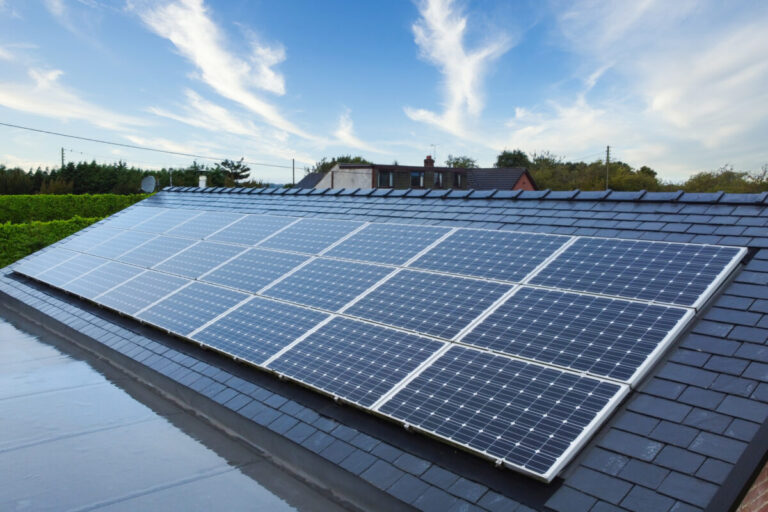Many businesses and public buildings in Britain will soon be installing solar panels, thanks to over half a billion pounds of government funding.
The latest phase of the Public Sector Decarbonisation Scheme, which has funded more than 1,000 projects since 2020, will deliver £530 million of public investment for energy efficiency upgrades, including heat pumps, solar panels, insulation and energy efficient lighting, in public buildings by whole country.
A further £27.5 million of funding will be provided to industrial activities through the Industrial Energy Transformation Fund to help struggling industries reduce their carbon emissions.
Minister for Energy Efficiency and Green Finance Lord Callanan said: “From school corridors to the businesses that power our economy, we want to ensure that buildings of all shapes and sizes are supported to achieve net zero burden.
“By committing more than £557 million today, we are standing firmly behind our public sector and local businesses, providing the help they need to make the transition to cleaner, homegrown energy.
“This will not only help reduce bills in the long term, but ensure we continue to reduce our emissions – having led the world by halving them since 1990.”
Significant expenditure on solar energy
Solar energy is an important point of attention in the financing provision: 84 projects receive financing for the installation of solar panels on public buildings. Ten NHS trusts will install solar panels on some or all of their hospital buildings, including South Tees Hospitals NHS Foundation Trust, which will receive more than £28 million to decarbonise two of its hospitals with solar panels and air source heat pumps.
This financing option for solar panels is also popular with schools and academies. NEAT Academy Trust in Newcastle-upon-Tyne received just over £4 million to install solar panels. Leeds City Council, meanwhile, received almost £7 million to decarbonise 11 buildings with solar panels, nine of which are educational institutions.
Several London district councils and boroughs have also committed to decarbonising their services with solar installations, including Derbyshire Dales District Council, Warwick District Council and the London Boroughs of Islington and Camden. The Greater London Authority also received £300,000 to decarbonise a Grade II listed building in Tottenham, currently used as a community centre.
The retrofit challenge
Britain’s sheer number of old buildings, while undoubtedly charming, poses a huge challenge to a net zero future. Britain has the oldest building stock in Europe, with 5.9 million buildings dating back more than a century and a further 4.3 million built more than 80 years ago.
Britain’s strong safeguards around the preservation of historic buildings may limit the options available regarding low-carbon technologies. Regulations that stipulate that work on monumental buildings must be in accordance with the original appearance of the building can make the installation of certain techniques unaffordable or simply impossible.
While the public sector decarbonization program and Scotland’s public sector heat decarbonisation fund While they are in some way helping public institutions reduce their carbon emissions, many argue that the pace of progress is not fast enough.
A 2023 report from Neos Networks notes that carbon emissions from public buildings in Britain need to be reduced five times faster than the current rate to meet the country’s net zero targets, with 91% of public buildings meeting will need upgrades over the next seven years.
Portions of this article are taken from our sister publication Current±. You can find the article here.
Solar Power Portal’s publisher Solar Media will host the British suntop on June 4-5, 2024 in London. The event will explore Britain’s new utility and rooftop solar landscape, look at the opportunities within a GW+ annual market, and much more. For more information, visit the website.


